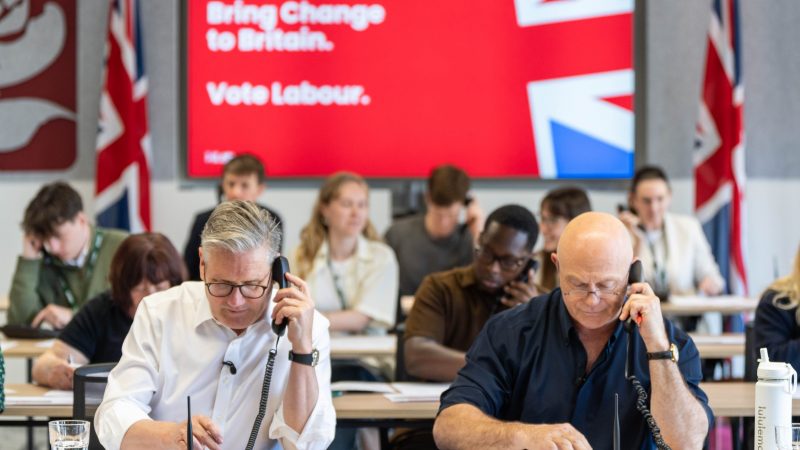
Every year since 2011, I have written a preview of the local elections and a scorecard after the elections referring back to it. You can see my preview article here.
Some years, it is difficult to gauge the bigger picture because different indicators are pointing in different directions, or Labour’s performance is different in different regions. Unfortunately, this year most indicators tell us the same thing.
The house style of this series of articles is not to dwell on what happened to the other parties – the rise of Reform and steep continued fall of the Tories – that is for other columns and commentators. Nor do I look at the Runcorn parliamentary byelection, there are plenty of other people writing about that dramatic knife-edge contest.
I just dutifully record the change in Labour’s local government standing against a range of measures, in the bad years as well as the good.
Just to reiterate what I said in my preview, the set of elections that took place on Thursday 1 May was unexpectedly small. This is because elections in seven county councils (East Sussex, Essex, Hampshire, Norfolk, Suffolk, Surrey, and West Sussex) and two unitary councils (Isle of Wight and Thurrock) were cancelled due to forthcoming local government reorganisation.
The rump of elections that went ahead covers a mere 1,757 councillors in just 25 councils, compared to 2,592 councillors in 107 councils in 2024 and 8,500 councillors in 2023.
There were also elections for four combined authority mayors (Cambridgeshire and Peterborough, Greater Lincolnshire, Hull and East Yorkshire, and West of England), and two single local authority Mayors (Doncaster and North Tyneside).
READ MORE: Council by council Labour gains and losses – and its position in each mayor race
Scroll to keep reading the story below….
Mayoral elections ‘not that bad’ for Labour
Dealing first with the mayoral results, these were actually not that bad for Labour, reflecting a repeat of the effective targeting from the May 2024 mayorals, where activists and resources were directed to those contests still in play (plus Runcorn) as Polling Day approached.
This delivered Labour holds on low vote shares by just 698 in Doncaster, 444 in North Tyneside, and a rather more comfortable 5,945 in the West of England. Had seven more people voted Labour in Runcorn, the media narrative might have been of a series of effective Labour defences of key positions against Reform.
Only Cambridgeshire & Peterborough was actually lost by Labour, having been an unlikely gain in 2021 under the now abolished supplementary vote preferential system. In the two new Mayoral contests, Greater Lincolnshire and Hull & East Yorkshire, Labour ended up not really in contention.
READ MORE: Runcorn blame game begins – why did Labour lose?
Record low in projected national vote, but still more councillors than 2023
That’s where the good news unfortunately ends!
There are at least four ways of measuring Labour’s national performance in council elections: national projected vote share (which the BBC calculates for the whole country, including areas not voting this year), raw number of councillors, number of councillors gained or lost, and number of councils controlled.
Looking first at projected national vote share, the estimated figure the BBC came up with for Labour was 20%. This is the lowest figure since 2009, matching that as a record low, and down from 34% last year and 29% when these seats were last contested in 2021.
National vote share in local elections for Labour is always lower than the Westminster opinion polls, because the Greens, Lib Dems and Independents perform better in local than in general elections, when they get squeezed, but this is still a weak score.
READ MORE: ‘Results so far say one thing: voters think change isn’t coming fast enough’
Raw number of councillors is the national (Great Britain) total figure, including all the thousands of councillors not up for election (by-elections and changes of party make it difficult to track the exact figure):
- 2010: 4,831
- 2011: 5,691
- 2012: 6,559
- 2013: 6,850
- 2014: 7,098
- 2015: 6,895
- 2016: 6,859
- 2017: 6,297
- 2018: 6,468
- 2019: 6,323
- 2021: 5,656
- 2022: 5,904
- 2023: 6,415
- 2024: 6,600
- 2025: 6,395
This means Labour still has more councillors than it had before 2023, and is not far below its recent peak of 6,600, and remains the largest party in local government by a comfortable margin of over 1,800 councillors over the Tories. We have nearly ten times more councillors than Reform, for now.
On gains and losses, from a low base of defending only 285 of the council seats up for election, Labour lost a net 187 councillors. This almost exactly cancels out the gains made in 2024. The fact of losing councillors is standard for every year when Labour has been in government (the same thing almost always also happens to the Tories when they are government), because local elections provide an opportunity to protest against the incumbent national government, but the scale of the losses as a percentage of a low number being defended from an already bad year, 2021, is alarming, as is the concentration of losses in hitherto safe (though already volatile in parliamentary terms) former coalfield wards.
READ MORE: ‘‘Labour has lost in Runcorn – here are the eight things the party should do now‘
‘Results will hopefully provide wake-up call’
The number of councils that Labour has controlled has been as follows:
- 2002 – 136
- 2003 – 103
- 2004 – 94
- 2005 – 92
- 2006 – 75
- 2007 – 58
- 2008 – 46
- 2009 – 37
- 2010 – 54
- 2011 – 81
- 2012 – 114
- 2013 – 117
- 2014 – 120
- 2015 – 114
- 2016 – 114
- 2017 – 107
- 2018 – 105
- 2019 – 99
- 2021 – 91
- 2022 – 96
- 2023 – 116
- 2024 – 121
- 2025 – 120
This was never going to change much as we were only defending Doncaster, and is therefore still at a historically high level, not least as lots of district councils have been abolished in previous rounds of reorganisation to unitaries.
As predicted, this set of election results was “small, unpredictable, interesting and messy” and it certainly did, as I expected “generate some media and political excitement”. Hopefully it will provide a wake-up call far enough out from the general election for corrective action to be taken, rather than being the start of a downhill trend.
Subscribe here to our daily newsletter roundup of all things Labour – and follow us on Bluesky, WhatsApp, Threads, X or Facebook.
Read more on the 2025 local elections:
Results on the day
- Council by council results: Labour gains and losses – and its position in each mayor race
- Joint worst projected national vote share projected in over four decades
- Lancashire: Defeated Labour leader hits out as two dozen seats lost
- Cambridgeshire and Peterborough: Results breakdown as Labour loses to Tories
- County Durham: Labour annihilated on once-red mining heartland
- Runcorn defeat: Results breakdown, analysis and reaction to knife-edge loss
- West of England mayor: Results unpacked as Labour edges Reform and Greens
- Doncaster mayor: Labour holds off Reform by 700 votes
- Northumberland results breakdown as Labour ends third in council it once ran
- Labour North Tyneside mayor holds on but vote halves as Reform come close
Analysis of the 2025 election results
- Starmer: ‘Labour must go further and faster to deliver after Runcorn defeat’
- Runcorn blame game begins – why did Labour lose?
- ‘Labour has lost in Runcorn – here are the eight things the party should do now‘
- MPs who could lose their seat on Runcorn by-election swing to Reform
- ‘Results so far say one thing: voters think change isn’t coming fast enough’
- Three ways to measure Labour’s success tonight
- ‘Uxbridgitis: If election results are grim, let’s not learn the wrong lessons again’
- Where’s Keir? PM barely features in Labour party election broadcasts for the locals
- The meme elections: Labour’s social media pivot to take fight to Farage
LabourList’s on-the-ground reports from the campaign
- Hull and East Yorkshire: Labour candidate spars with Reform’s boxing star in UK’s most disillusioned city
- Cambridgeshire & Peterborough Nik Johnson on why he’s standing down and Anna Smith on knife-edge Labour-Tory fight to replace him
- West of England: Tory and Green threats, Dan Norris and low voter awareness
- Lancashire: Long shadow of Gaza looms over key battleground
Inside the Runcorn campaign
- Mood on the doorstep: Labour’s last push for Tory voters to keep out Reform
- At least 150 Labour MPs visit – but Keir Starmer ain’t one
- Karen Shore interview: Labour candidate on Reform, the NHS and closing asylum hotels
- Runcorn poll: One in ten Labour voters expected to back Reform
- SHARE: If you have anything to share that we should be looking into or publishing about this story – or any other topic involving Labour– contact us (strictly anonymously if you wish) at [email protected].
- SUBSCRIBE: Sign up to LabourList’s morning email here for the best briefing on everything Labour, every weekday morning.
- DONATE: If you value our work, please chip in a few pounds a week and become one of our supporters, helping sustain and expand our coverage.
- PARTNER: If you or your organisation might be interested in partnering with us on sponsored events or projects, email [email protected].
- ADVERTISE: If your organisation would like to advertise or run sponsored pieces on LabourList‘s daily newsletter or website, contact our exclusive ad partners Total Politics at [email protected].





More from LabourList
LabourList Christmas quiz 2025 round 4: Christmas Connects
EXCLUSIVE: A Christmas message from Hollie Ridley
‘Carol of the Bells: Christmas, Ukraine’s resistance and the fight for freedom’